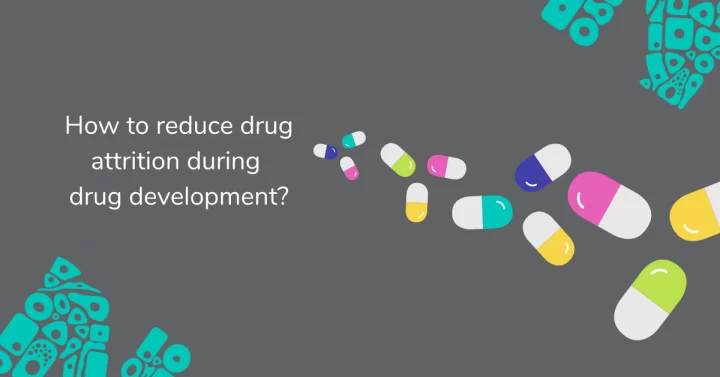How to reduce drug attrition during drug development?
In the modern biopharmaceutical industry, one out of ten drugs fail to reach the clinic. However, the R&D cost per novel drug has increased over 100-fold since 1950. In other words, R&D productivity has been going down for the last decades despite major technological advances.

There are two main causes of drug attrition: safety and efficacy, and in both instances, the common denominator is the inadequacy of current preclinical models to predict outcomes in humans. Recently, regulatory agencies have made a clear move in support of alternative models broadening the scope of acceptable preclinical models for drug development. Both the US Congress (with the FDA Modernization Act of 2021) and the European Parliament (with the Resolution Vote) are actively promoting phasing out the use of animals in experiments and replacing them with more human-relevant models to test drug’s safety and efficacy.
During the R&D phase of drug development, decisions around safety and efficacy are based on results obtained from models, and therefore R&D productivity is very sensitive to models’ predictive validity. So, what would be the impact of using preclinical models which are better are predicting clinical outcomes? Firstly, safer drugs will get to the clinic and be approved for registration; Secondly, drug attrition will be reduced creating value for the biopharmaceutical industry.
Better preclinical models improve patient safety and create more returns on investments
As a result, early adoption of the right advanced in vitro models for drug development is crucial. Rigorous model evaluation is important, and it should include biological recapitulation of the human physiology together with tests and endpoints relevant to the clinical state, statistical and experimental hygiene, and predictive validity. Ideally, model evaluation should be done using criteria set by third parties (e.g., International Consortium for Innovation and Quality in Pharmaceutical Development also known as the IQ Consortium, or IQ MPS Affiliate, established to provide a venue for collaboration and data sharing to facilitate the biopharmaceutical industry implementation and qualification of microphysiological systems (MPS).
Overall, by improving the predictive validity of the models used to assess your drug candidates, the biopharmaceutical industry will be reducing the risk of drug attrition and creating value for their drug development portfolio. Better models will help make the correct decisions on good drug candidates and not the incorrect decisions on poor drug candidates; they will recover R&D productivity.
Newcells is developing novel human in vitro models of kidney, retina, liver, and lung that are physiologically relevant and more predictive of in vivo outcomes. A study conducted in collaboration with Takeda has highlighted that Newcells’ flagship product, aPROXIMATE™, is the ideal tool to evaluate renal drug safety during drug discovery and development, and to predict drug induced kidney proximal tubule injury.
Newcells offers a high quality and reliable service for the evaluation of customer compounds carried out by our experienced scientists. We develop and complete study protocols in our laboratories in the UK, working closely with our customers to define a tailored study design that best delivers the data that they require.
For further details, watch our webinar “Reducing compound attrition by predicting renal tubular toxicity with in vitro PTEC models”.
For more information contact us.
Interested in Newcells in vitro models?
View our ModelsShare on social media:
Don't miss out on our latest innovations: follow us on Linkedin



